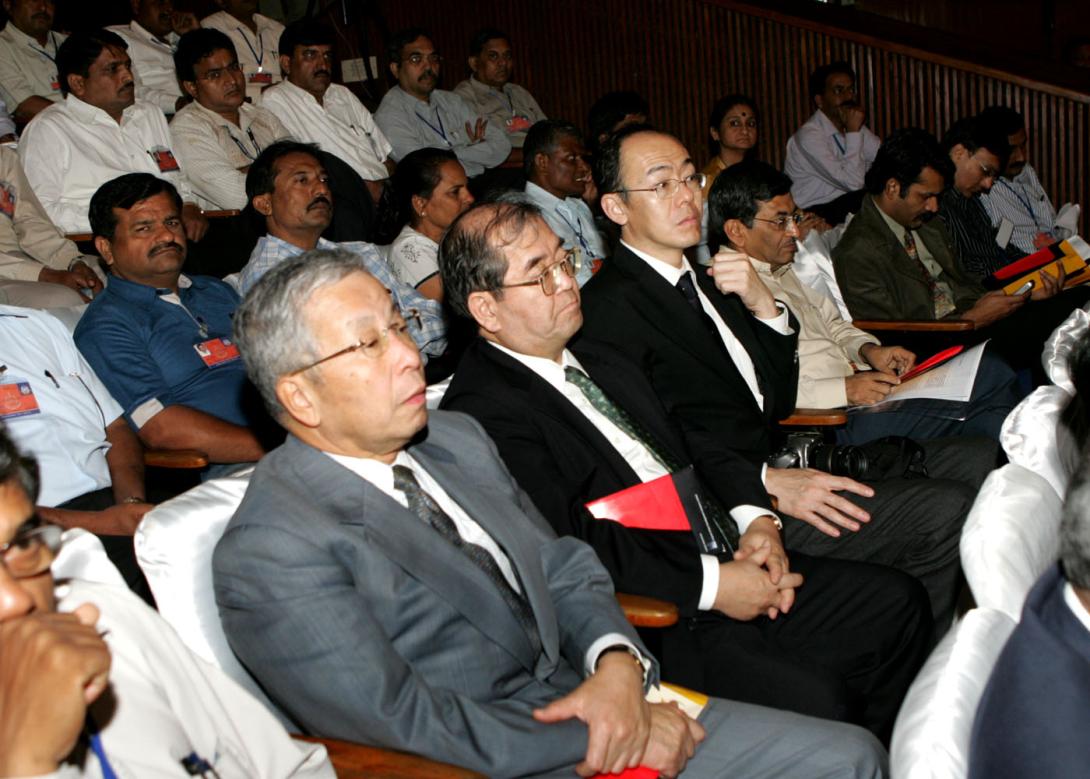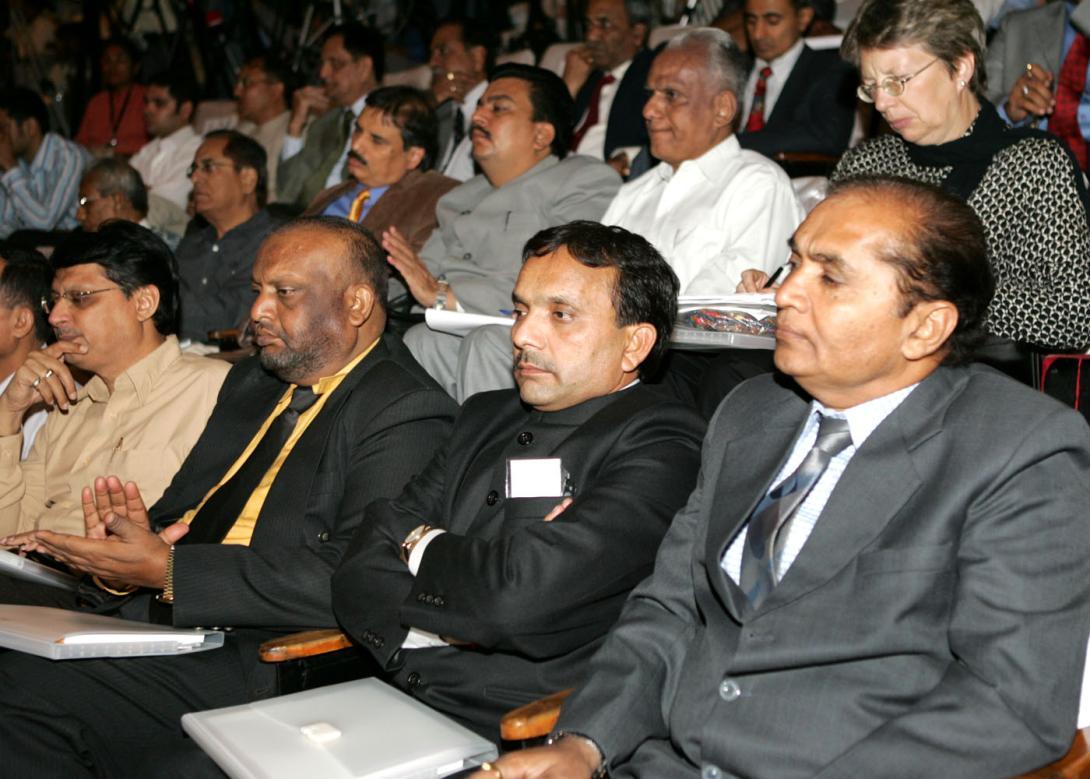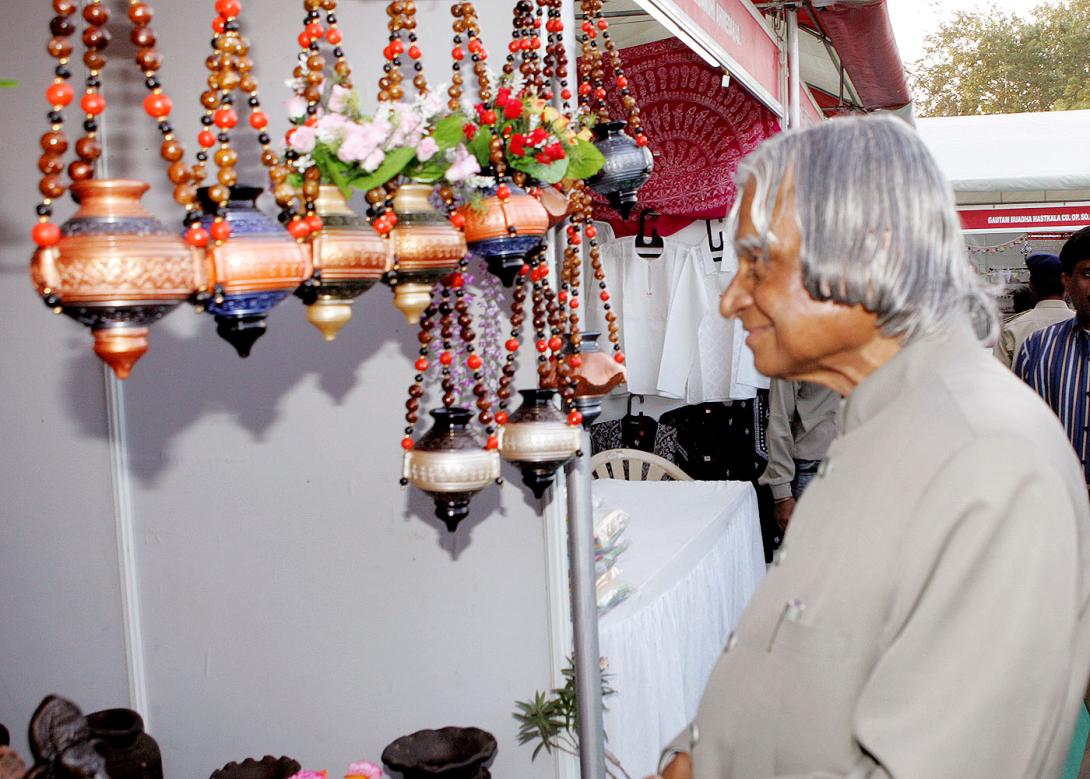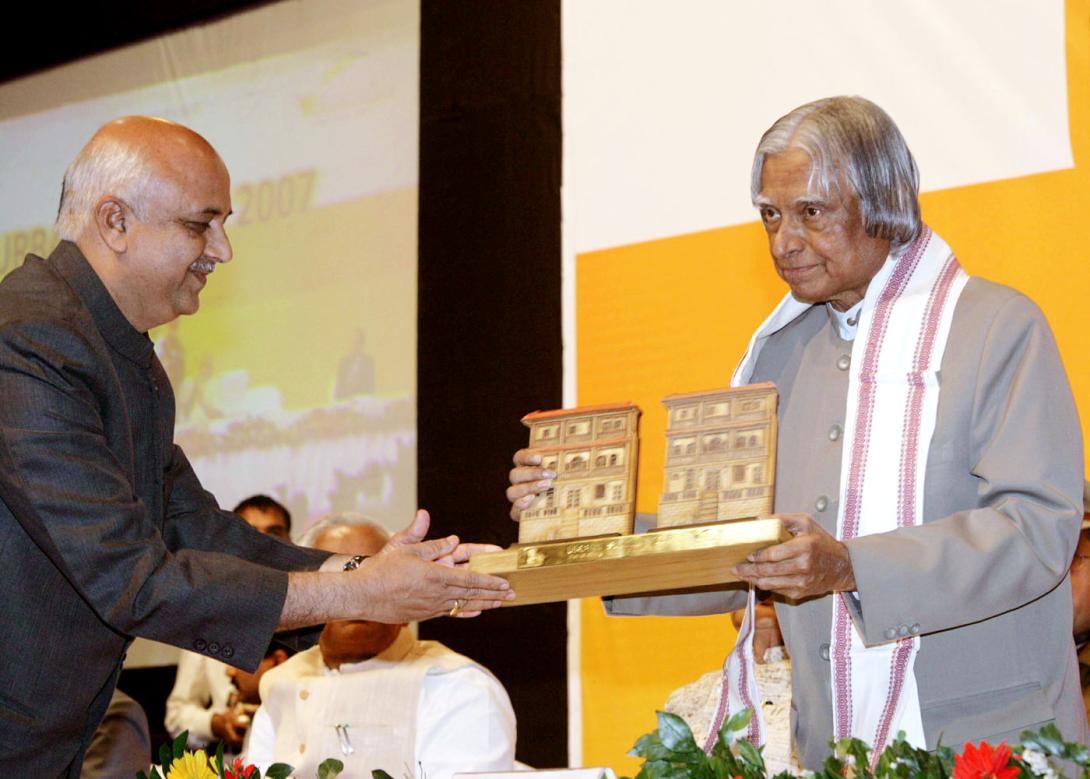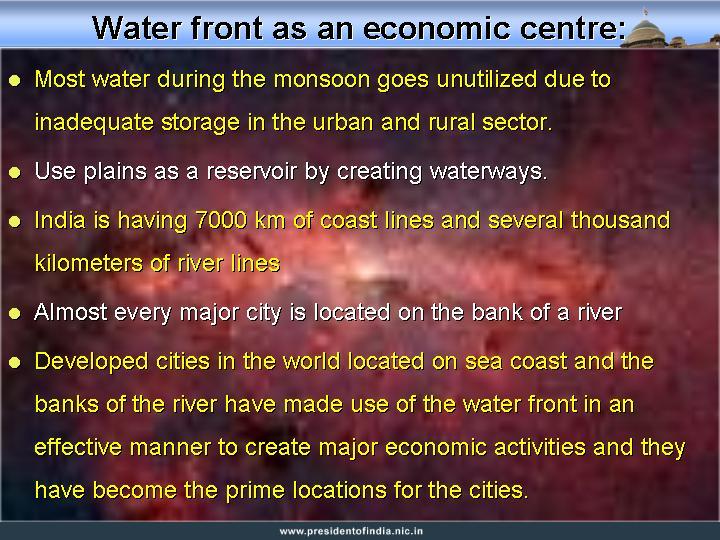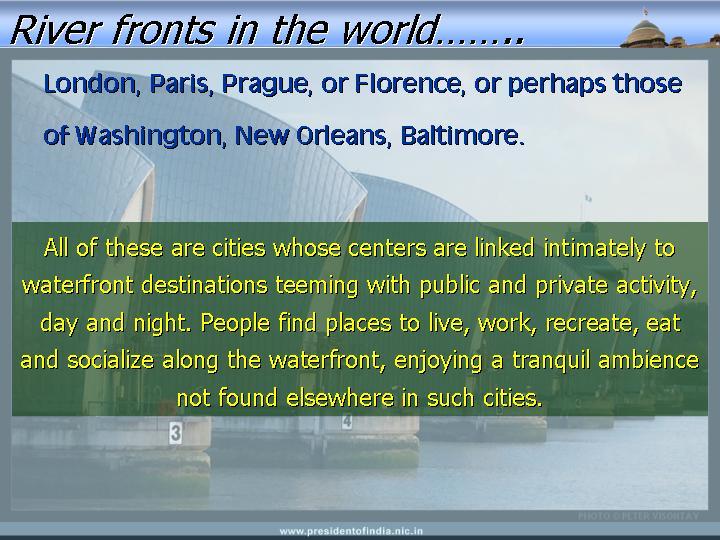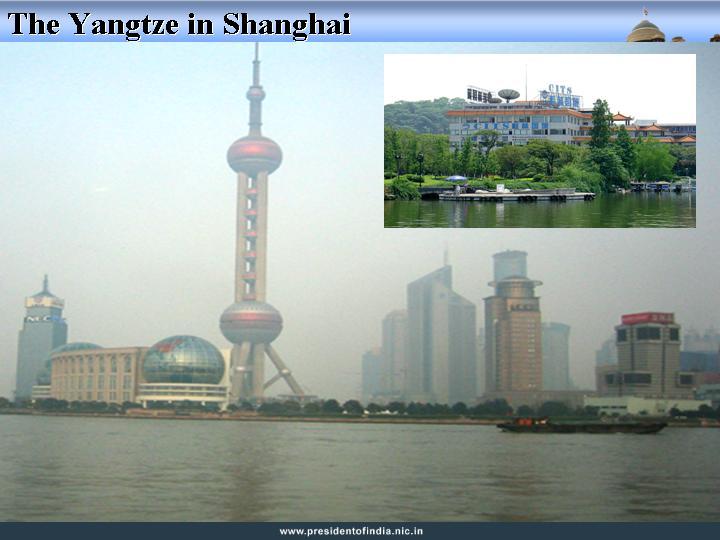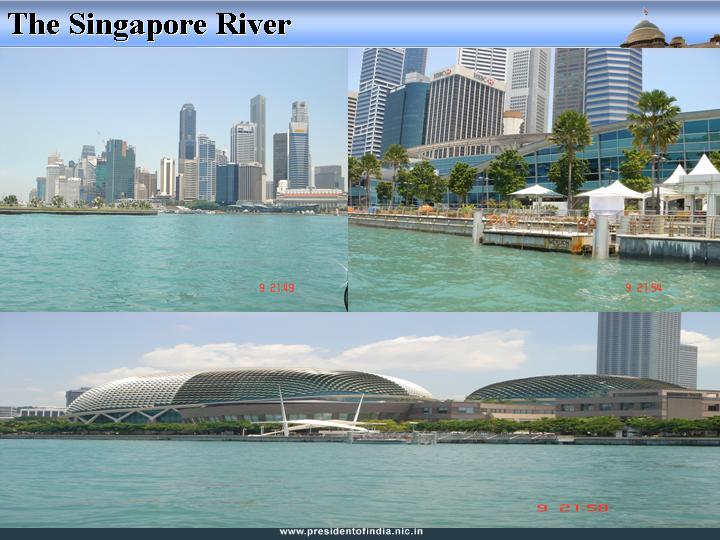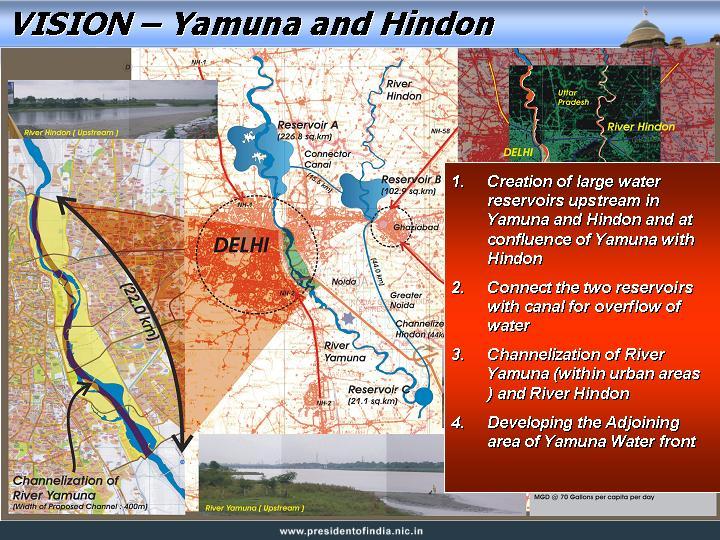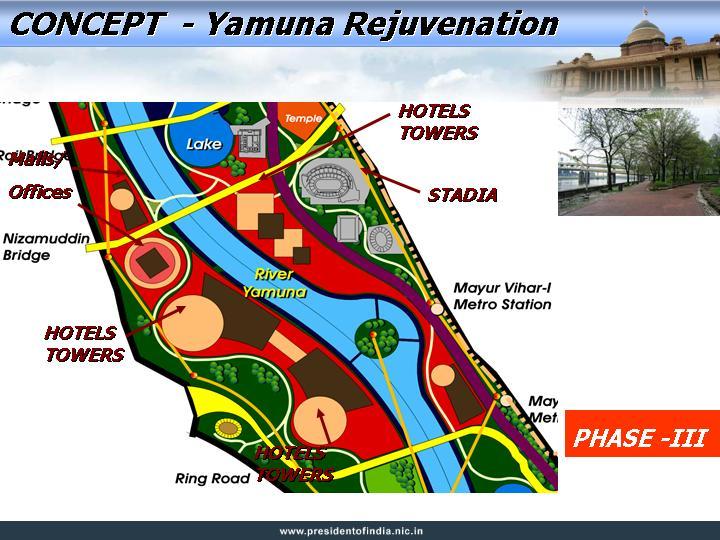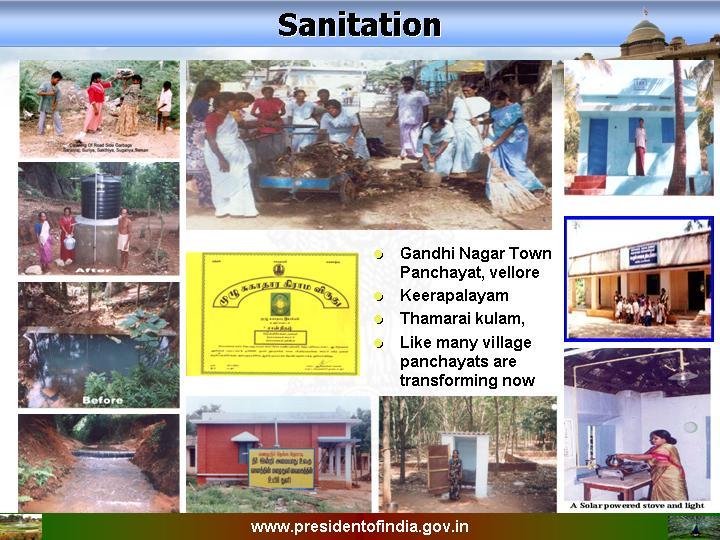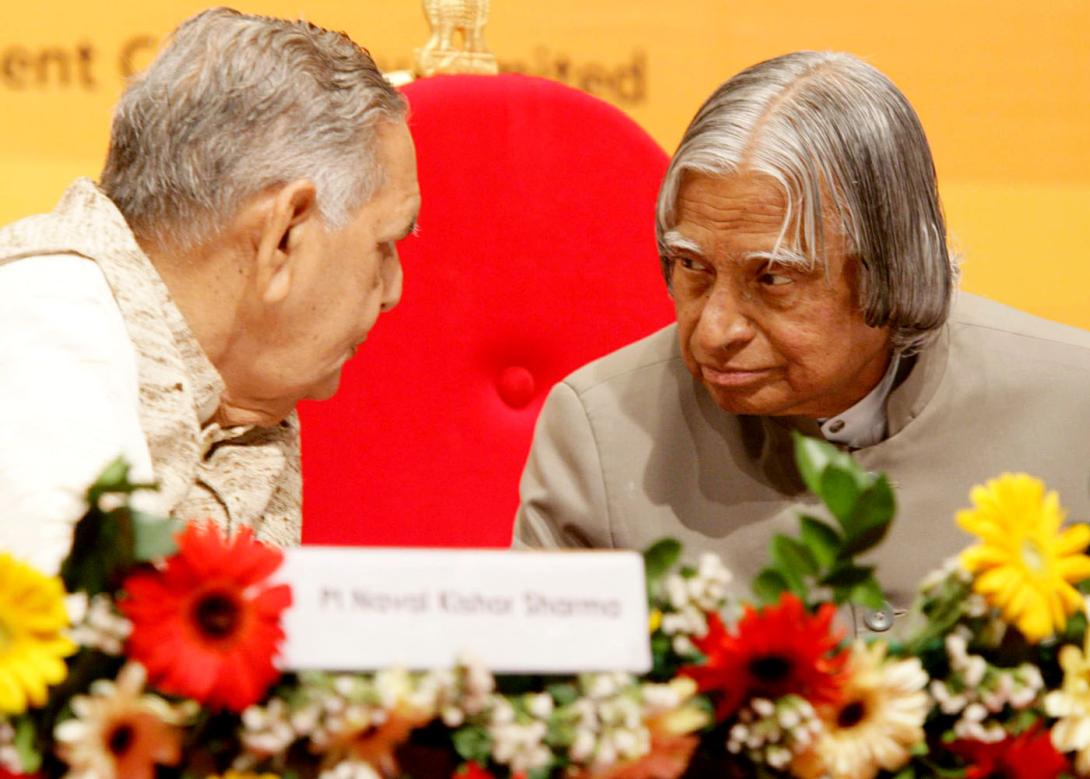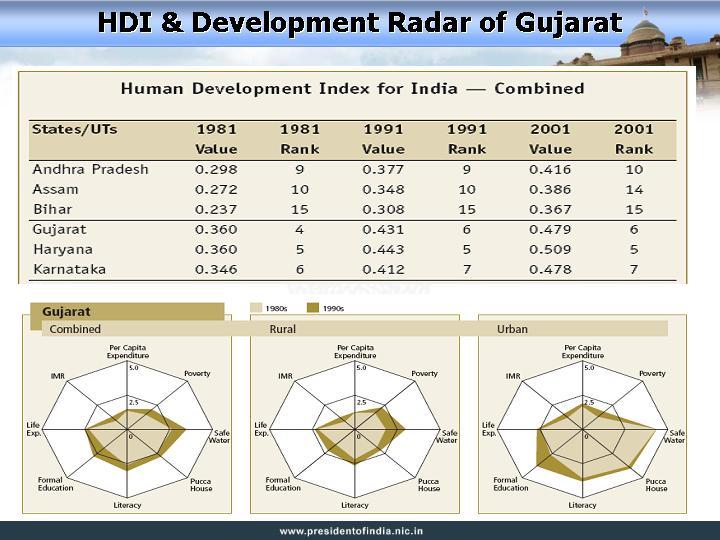Address at the Inaugural Session of the 'vibrant Gujarat - Urban Summit', Ahmedabad, Gujarat
Ahmedabad, Gujarat : 15-02-2007
Dynamics of Urban Development
"Connectivity is the growth"
I am indeed delighted to participate in the inaugural session of the ?Vibrant Gujarat - Urban Summit?. I am happy that the Summit is to deliberate on how to make the cities of Gujarat productive, self-sustaining with improved quality of life. The Summit focuses how to reorient the investment friendly environment towards urban centers of Gujarat. My greetings to all the partners in development, opinion makers, planners, administrators and distinguished guests.
Integrated Development
In the nation, balanced development of rural and urban sector is very important. Government, private and public sectors have been taking up urban and rural development in parts. For example, starting an education institution, starting a healthcare center, laying roads, building houses, building market / shopping complex, giving communication link, in particular rural and urban areas, have been taken up in the past as individual activities. During the last few decades, it is our experience that these initiatives starts well, just like heavy rain resulting into multiple streams of water flow. As soon as the rain stops, a few days later all the streams get dried up because there are no water bodies to collect the surplus water and store it at the right place. We need to chalk out a programme which envisages an integrated development plan with employment generation as the focus, driven by provision of the habitat, healthcare, education, skill development, physical and electronic connectivity and marketing in an integrated way.
Gujarat?s Mission
I am happy that the Gujarat State government has taken action in solid waste management, rain water harvesting, improvement of Municipal and health services through innovative outsourcing model and provision of uninterrupted quality electric supply to all the villages of Gujarat. The overall effect of sound city management has been demonstrated through the fast transformation of Surat after plague, reconstruction of Bhuj after 2001 earthquake and fast recovery of cities like Surat after 2006 floods. Your action on realizing Certified Emission Reduction and getting Carbon Credit is a good beginning for environment upgradation. This shows how the political system, beauracratic system, executive system are working together with the full participation of people for providing quality services to all citizens. With this dynamic background of governance system sensitive to the needs of the people, I would like to share my thoughts on development of urban oriented infrastructure in such a way that it will support the socio-economic activities of the surrounding rural clusters extending up to 20-30 km radially without causing additional urban pressure in the existing urban agglomeration in addition to the planned growth of the cities.
Steps towards sustainable development
Redevelopment of Urban Areas: I believe that effective implementation of urban development linked to the development of cluster of villages around the periphery of the existing cities will reduce the further influx of population to developed urban area. However, the existing urban slums also need immediate attention, since the location of slums generally linked with the job opportunities in their vicinities as far as possible in-situ development of existing slums needs to be initiated. The existing Jawaharlal Nehru National Urban Renewal Mission (JNNURM) is effectively addressing this need, so that all our existing and future cities cater to the needs of the poor and improve their quality of life. While executing JNNURM care may be taken to see that the habitats are made of high quality with the participation of the people.
Since this summit is on urban infrastructure development, I would like to concentrate on the parameters to be taken into account while planning the infrastructure. For a nation like India, a critical mass is required to make the amenities viable. It is estimated that the population size of one to three lakh is necessary to sustain the economy of the growth centre and the viability of the social infrastructure. Water, energy and sanitation are the basic requirements determining the quality of life of people. Hence I would like to discuss this problem first.
Water Security and Energy Independence
Energy is the lifeline of modern societies. But today, India has 17% of the world?s population, and has just 0.8% of the world?s known oil and natural gas resources. We might expand the use of our coal reserves for some time and that too at a cost and with environmental challenges. The climate of the globe as a whole is changing. Our water resources are also diminishing at a faster rate. As it is said, energy and water demand will soon surely be a defining character of our people?s life in the 21st Century.
Water front as an economic centre: Today most of our water during the monsoon goes unutilized as there are no planned adequate storage capacities in the urban and rural sector. In addition to the mega Hydel projects, it is desirable to create reservoir in the plains along the rivers. This will help to store adequate quantity of water, which is going as waste.
India is blessed with more than 7000 km of coast lines and several thousand kilometers of river lines and almost every major city is located on the bank of a river. Desalination of seawater has to be one of the important mission in the coastal areas. It is time we pay attention to our rivers which is a lifeline to our society. We should rejuvenate our rivers as the life line of cities by storing the surplus waters during monsoons by creating series of reservoirs along the rivers in the plains and inter-linking of the reservoirs wherever feasible. Most of the developed cities in the world located on sea coast and the banks of the river have made use of the water front in an effective manner to create major economic activities and they have become the prime locations for the cities. I would like to show some illustrations. Some of the examples of such effective use of water fronts are London, Paris, Prague, or Florence, or perhaps those of Washington, New Orleans, Baltimore. All of these are cities whose centers are linked intimately to waterfront destinations teeming with public and private activity, day and night. People find places to live, work, recreate, eat and socialize along the waterfront, enjoying a tranquil ambience not found elsewhere in such cities.
Gujarat has 1600 kms of coastal line and 3 major river systems and many tributaries flowing in the State. Many of the cities like Ahmedabad, Surat, Vadodara are on the banks of the river Sabarmati, Tapti, Viswamitri. Urban development can create a perennial water management system in these cities. I am happy that Sabarmathi Channalization programme has already been initiated with the partnership of HUDCO and Ahmedabad will be developed as a water front city. These and other similar water management systems in different parts of the State can enhance the availability of water and eliminate scarcity of water and also help in managing floods and recharge the underground water table. There is a potential to develop water bodies in and around Surat. It will also provide a special attraction to the tourists in some places and enhance the eco-system as a whole.
In addition to the overall water management, there is an urgent need to implement local water harvesting systems in each habitat including water recycling systems. I understand that the present urban development plan envisages compulsory water harvesting system in everyone of the dwelling units in all the cities of Gujarat.
Sanitation: (Close Loop System of Waste Management)
When I think of sanitation, first thing comes to our mind is the provision of sanitation facilities with adequate water for all the households in the rural and urban clusters. This activity itself can be made as an economic wealth generating activity for the urban and rural areas. For example, in some of the villages the toilet facilities have been made out of fiber glass by the village self-help groups. I have seen the fabrication of toilet facilities by the villagers in Ahmedabad and Kirapalayam and Vallam in Tamil Nadu. Such facilities bring down the cost of each toilet substantially. As a second step, it is to be ensured that all the toilets are functional at all times. This will need training in plumbing and maintenance of toilets by a group of village personnel after training who can provide the service to the villagers for a fee. As a third step we have to ensure that continuous availability of water to the toilets. With the depleting water resources this can be possible only if we have a system of recycling of used water including the linkage to water harvesting in every home. This also must become part of the total sanitation programme. As a fourth step, there is a need to connect the individual toilets to a common sewerage system for central disposal without which all the efforts taken in providing hygienic toilet facilities in individual dwellings may not yield the desired results. I have come across a model which has been executed by Shri H.G.S.Gill, an NRI at Karodi village in Hoshiarpur District, Punjab, very close to Martyr Bhagat Singh?s birth place. He has used a technology through which individual toilets are connected to a central village sewerage system which is being taken to a remote place through underground closed drainage system. There is an open sewerage tank exposed to sun, where the waste is constantly agitated and water gets separated. Also, the sewerage water is treated and is being used for agricultural purposes. Mr. Gill is ensuring that the individual households are maintaining their sanitation system without being blocked and the central system is also being maintained through specially trained staff for this purpose. After few months when the central tank is cleaned the solid waste is converted as manure and used for agricultural purposes. He is extending this model to two more villages in Hoshiarpur District namely Jain and Jandiala. What I would like to emphasize here is that it is not only adequate to bring toilets to each house, but it is essential to consider the overall problem of total waste disposal and treatment for the sewerage system so that the environment is maintained clean and tidy at all times. This, I am sure, can be achieved through the solid municipal waste programme being planned by Gujarat Urban Development Company.
Now, let me talk to you on the energy independence with reference to the growing urban pressure.
Energy Management
Energy independence rests on two principles. The first, to use less energy to provide services and cut down energy losses. Simultaneously, we should access technologies to provide a diverse supply of reliable, affordable, renewable and environmentally sustainable energy.
Hence, the typical features cited for the Buildings in our rural and urban areas should be: greater energy efficiency and use of renewable energies, efficient water management and above all caring for the environment through proper sanitation system with well planned waste management programmes. All these features can be accomplished by popularizing the mission of green buildings in our cities and rural complexes.
Energy consumption: Targets - In a growing economy when our population is expected to grow approximately at 1.3% energy consumption rate is expected to grow at 4.3% per annum. This trend would strain the energy sector to a large extent. Building sector being the major energy consumer can contribute to a large extent to discuss this issue since green buildings have the potential to save 30 to 40% energy. Some of the salient features of the Green Building are:
(a) minimum disturbance to landscape and site condition
(b) buildings have to be architectured with sun and earth orbit conditions such so that maximum natural light and breeze are received and minimum heating is possible
(c) use of non-toxic, recycled and environment friendly building material including material made using fly ash
(d) efficient use of water and water recycling
(e) use of energy efficient and eco-friendly equipment
(f) use of renewable energy
(g) high quality indoor air, provisions for human safety and comfort and friendly to differently challenged people.
My Experience in using the nature: I would like to narrate some of my experiences in Rashtrapati Bhavan. In Rashtrapati Bhavan I have two offices, one in the ground floor and the other one in the first floor. When I started working, I found that all the doors and windows with beautiful curtains were kept covered. Because of this practice, the electric lights were used; from the time I enter the office till I complete my work for the day. During my usual walk in Rashtrapati Bhavan, it occurred to me that when the beautiful sun is all around, why all the doors and windows were covered with curtains and the room has been made dark. The reason could be some security concerns. I discussed this with my team and I decided to open the curtains and allow the sun light to come into my office. Once the curtains were opened the available sun light was more than sufficient for my work during the day time. Energy saving in every room is possible. Even the visitors who come to meet me notice the difference. The message is that when we design buildings we should ensure that we are able to make maximum use of the nature?s gift such as light, heat and breeze for providing the comfortable living for the occupants. In all the urban buildings, this feature must be fully taken into account. Ahmedabad is well known for design and architecture of buildings with these features.
Renewable energy makes economic sense: When I visited BR Hills in Karnataka, I found that each house had a solar panel which provides necessary electricity for the household. I am sure, similar systems can be standardized for the dwelling units in the rural and urban complexes and made available for each house and each industrial building. This will be a cost effective solution for meeting the overall energy requirements and also maintaining a clean environment. Along with solar panels, use of LED crystal based lamps could also be made for conserving the overall energy requirements for lighting purposes. Another method is to utilize the solar thermal. They use solar collectors intelligently to provide power for hot water and other heaters. In fact lighting, fans and air- conditioners can also be run by solar thermal.
I am aware that Gujarat is a producer of wind energy. Apart from wind energy, the city complexes can also consider utilization of solar energy and creation of centralized bio-gas plants for electricity generation using municipal waste of the urban and rural areas. This approach will enable provision of additional electricity for the enterprises and the energy needed for household cooking purposes wherein waste disposal is also taken care of.
Green Building
In Gujarat, there are 20 million people who are in the mid income group and about 10 million people are living below poverty line. Every one of them dreams to have a proper habitat. In order to make their dreams a reality we need about 5 to 6 million houses to be built in the next 15 years. In fact this massive construction effort will form the backbone of Gujarat economy. Green Building specialists are already addressing methodologies through which they can make habitat using green technology to the middle class and below, incorporating special safety requirements for earthquake prone and coastal regions. All the future housing in Gujarat may like to adapt the standardized technologies while planning the total habitat for the people.
Conclusion
National Human Development Report of Planning Commission released in 2001, indicates Gujarat was fourth in all India ranking in respect of Human Development Index in the year 1981. Subsequently in 1991 and 2001, Gujarat has been ranked sixth. Further, in the development radar, it can be seen that in respect of safe water, pucca house, literacy and formal education in urban areas have fared better compared to life expectancy, infant mortality rate, per capita income and poverty. However, in respect of rural areas all these development indicators show the lower level of performance and need higher improvement. While Gujarat is progressing on the urban development front in the tier-1, tier-2, tier-3 cities, it is essential to create PURA clusters circumscribing the urban areas, so that the pressure on the cities through migration or inflow from rural areas will be reduced leading to balanced growth both in urban and rural areas.
While investing in Gujarat Development one can see the examples of how Kutch has recovered fast economically and socially after the earthquake; how Surat became a modern city with amenities after the major breakout of plague; how Surat has recovered fast after the recent flood; and how uninterrupted quality electricity has reached all rural areas of Gujarat. These are the indicators of management style and the inherent capabilities of the state towards focused development in an integrated manner. Thus, there is a need to develop the adjoining village complexes along with the urban areas. I am stressing the need for the development of adjoining village complexes since there is a possibility of employment seekers from the rural areas migrating to the developed urban areas in the absence of adequate opportunities in the rural sector. This will make the developed urban areas to face the similar pressure which will affect the overall quality of life in the urban areas. To prevent this life cycle phenomenon we need to focus on rural development simultaneously in the adjoining areas of the cities. It is essential to ensure that the rural culture has to be nurtured and flourished to protect our integrity of the society.
With these words, I inaugurate the Vibrant Gujarat Urban Summit and my best wishes to all the participants for success in their mission of promoting Inclusive Development through Partnerships.
May God bless you.



